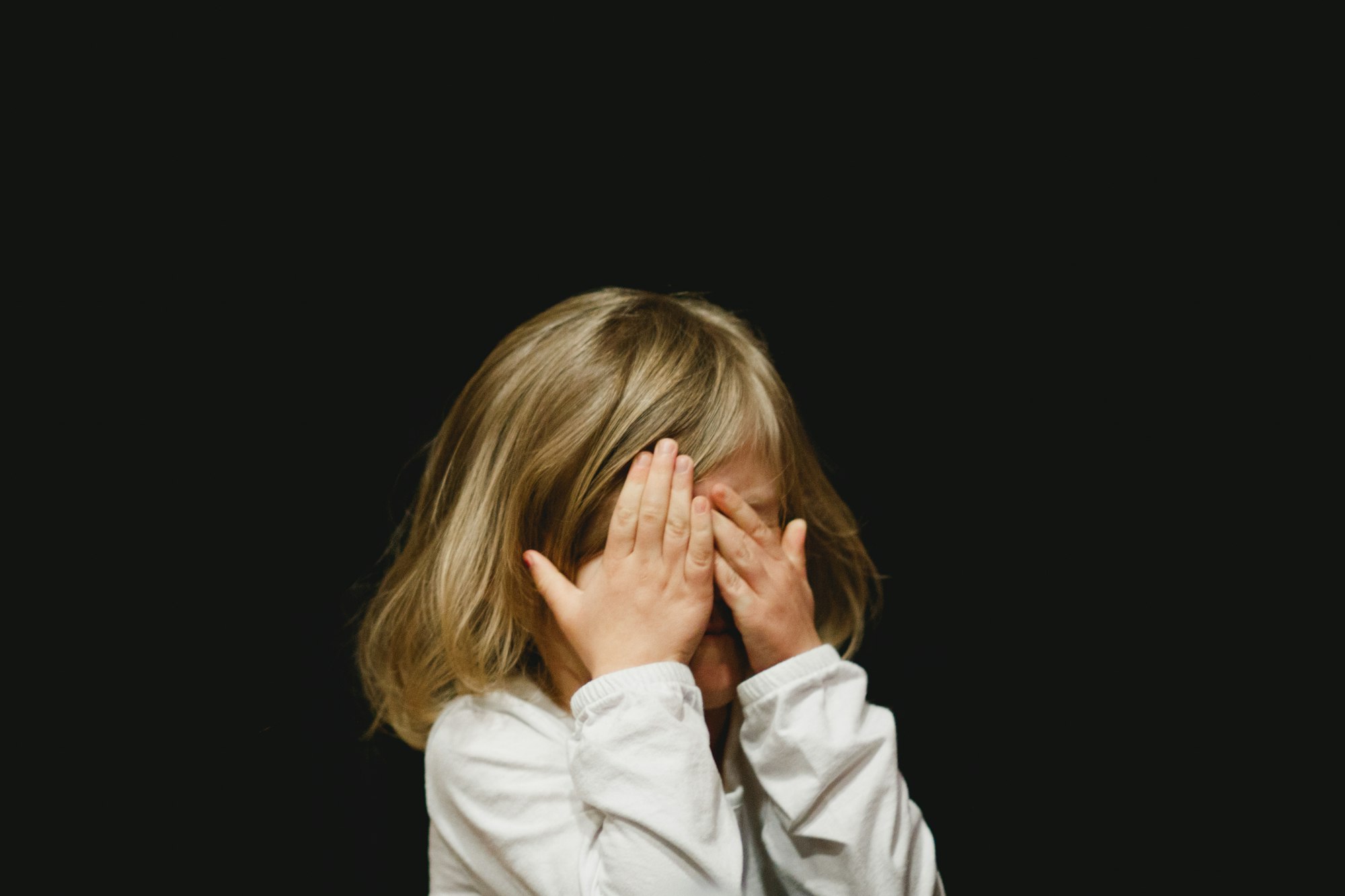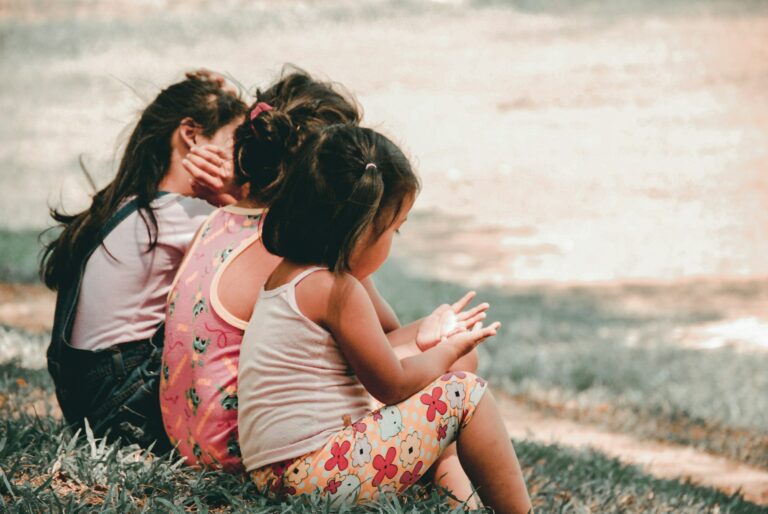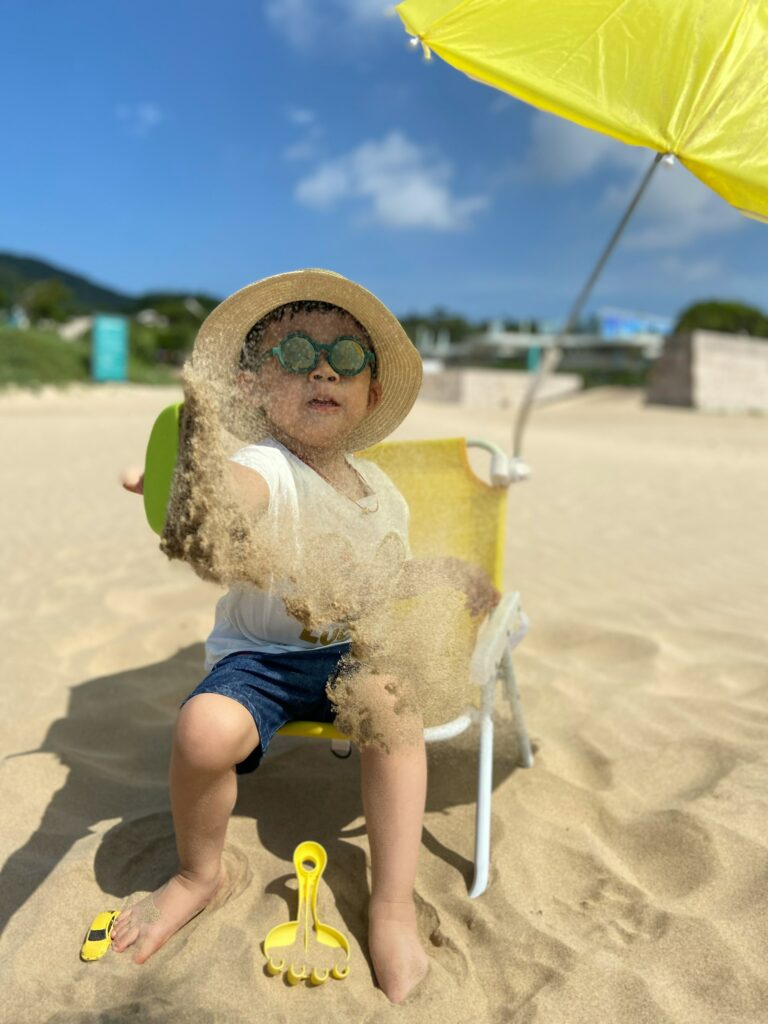Unpredictable outbursts, sudden tears, and an unexpected aversion to the blue cup—does this sound familiar? For countless parents, the terrible twos strike as a bewildering storm of defiance, meltdowns, and explosive curiosity. You might wonder if your child’s shrill “no!” is normal or if these overwhelming surges mean something deeper. The search for clarity can feel endless: is it poor parenting, temperament, or just a phase? Here’s the reality—this stormy chapter is not only common but signals a vital leap in your child’s emotional and cognitive growth. Understanding why the terrible twos emerge, how to recognize the signs, and which tools foster smoother days (and calmer nights) can make all the difference in family life. Let’s unpack the medical, developmental, and emotional truths behind this threshold and find practical steps to support your child’s powerful transformation.
What are the terrible twos? Decoding a misunderstood phase
What exactly are the terrible twos? While the phrase conjures up images of grocery store tantrums and the infamous “no!”, this developmental window spans much more than surface-level drama. Clinically, the terrible twos describe a period between 18 months and three years—sometimes sneaking in as early as 12 months and stretching into the fourth year. Beneath this label, you’ll find a clash of emotional outbursts, opposition, frequent frustration, and a blossoming sense of identity. Science tells us this isn’t simply bad behavior or a parenting misstep. Instead, it’s initiated by neurological maturation and emotional surges as your toddler discovers autonomy.
Common misconceptions run rampant: “All children go through wild tantrums.” Or, “It means parents have lost control.” In reality, the spectrum is broad—some toddlers breeze through with only mild turbulence, while others face frequent, high-intensity storms. The essential point? The terrible twos are not a verdict on your parenting. Rather, they are rooted in normal, healthy development.
Milestones and variations: the unpredictable journey through the terrible twos
The age of onset and intensity can leave families guessing. While “twos” suggests a fixed timeframe, many children glimpse this transition before their second birthday; others continue to test boundaries well into preschool. Duration is largely shaped by factors such as innate temperament, communication skills, and the child’s environment. A toddler who quickly acquires language may experience fewer behavioral blow-ups, as words provide an outlet for needs and feelings, while a more sensitive child may be rocked by extremes. This drastic unpredictability is entirely normal and calls for adaptable, individualized strategies rather than a rigid template.
The medical and developmental engine behind the terrible twos
Physical and motor skills: independence in motion
Around this time, toddlers undergo a dramatic uptick in motor development, balance, and coordination. Suddenly, your child masters feeding themselves, climbing furniture, or experimenting with fine motor activities—stacking, drawing, even unscrewing jars. This newfound self-reliance is exhilarating, yet their judgment and risk assessment lag behind. Wanting to “do it alone” collides with limited capacities, resulting in tension, power struggles, or full-blown meltdowns if help is required. It’s an intricate dance between eager independence and biological limitations.
Language and cognitive leaps
Developmental neuroscience reveals the brain advancing at breakneck speed. Toddlers comprehend far more than they can articulate, leading to volatile frustration when ideas cannot be fully expressed. This mismatch triggers miscommunication, tears, and the kind of tantrums that leave both you and your toddler exhausted. Curiosity leaps ahead—your child now constantly explores cause-and-effect, persistently testing rules and boundaries. It’s not disobedience; it’s scientific experimentation performed by a tiny human. Encouraging daily conversation, reading aloud, and responsive listening are powerful tools that promote smoother emotional regulation and richer vocabulary.
Emotional storms: drawing the map of big feelings
Paediatric research consistently highlights emotional overflow as a hallmark of the terrible twos. Joy, rage, jealousy, intense excitement—feelings each arrive like tidal waves. The developing nervous system, and especially the prefrontal cortex (the seat of emotional self-control), is immature and easily overwhelmed. Your toddler’s tears or aggression rarely stem from manipulation; instead, they reflect being swept away by sensations too large to contain. Gentle acknowledgment (“You’re sad because your toy broke”) gives structure and gradually teaches emotional literacy—a proven buffer against future behavioral challenges.
Autonomy and attachment: walking the tightrope
A powerful drive emerges: the urge to assert independence. Seemingly small decisions—choosing socks, refusing food—take on immense importance as your child negotiates their place in the world. Expect brief periods of stubborn “no” or, paradoxically, sudden clinginess. These behaviors are not contradictions but rather threads of self-assertion woven with the deep need for security. Both are essential facets of your toddler’s emotional build.
Impulse control: why reasoning fails at two
Medical imaging has shown that the neural circuits required for impulse control and self-regulation mature slowly, often not reaching full capacity until well into elementary school. Thus, parents face flares of hitting, biting, or impulsive dashes towards danger. These are not personal affronts but the neurobiological signature of a brain under construction. Consistency, predictability, and a supportive environment become the safety net that helps teach limits.
Behavioural snapshots: what “normal” looks like during the terrible twos
- Tantrums and meltdowns: Often preceded by hunger, fatigue, or overstimulation. Distinguishing genuine distress from “testing limits” is less important than responding with empathy and structure.
- Defiant “no”: Refusal becomes a default answer, sometimes even when your child means yes. This is a tool for exploring boundaries and agency.
- Rapid mood shifts: Laughter one minute, tears the next; minor disruptions can kick off significant reactions—this reflects the ongoing struggle for self-regulation.
- Physical expressions: Hitting, biting, or throwing objects are overt signs that impulse control is not yet established. These signal emotional overload, not malice.
- Changes in routine: Sudden food refusal, disrupted sleep, or resistance to daily habits like toothbrushing are common as your child seeks control in a body and world that feel unpredictably new.
Understanding the causes: why the terrible twos happen
Medical studies frequently point to a dynamic mix of neurological developments, hormonal fluctuations, and environmental stressors. Rapid hormonal changes—such as increased growth hormones—can trigger changes in mood. Sleep disruptions compound emotional volatility.
A key source of frustration stems from expressive language lagging behind receptive language; your child understands much more than they can say, causing miscommunication and emotional surges.
The push for autonomy—the essential drive to “do it myself”—collides with real-world obstacles and adult restrictions, often generating resistance. Meanwhile, shifts in caregiver routines, overexposure to new stimuli, or family transitions layer on complexity. Even subtle differences in temperament (a child who is especially sensitive or highly energetic) will color the terrible twos uniquely.
Myths, culture, and reframing the story
Across societies, the terrible twos carry distinct cultural interpretations. In some communities, toddler tantrums are treated as private, transient matters—largely ignored. Others advocate for early, gentle discipline. Some researchers argue that “terrible” is a misnomer, emphasizing the potential for the “transformative twos”—a time of explosive learning, resilience, and the earliest glimmers of self-awareness. Regardless of framework, what remains clear from both Western and global research is that neither extreme discipline nor unbounded permissiveness serves families well. Respect for your child’s emotions, consistency, and a few well-chosen boundaries provide the best scaffolding.
Practical support: strategies for thriving through the terrible twos
Naming emotions and separating behaviors
When your toddler lashes out, resist focusing solely on the behavior—zoom in on the underlying feeling. A calm statement like, “You are angry because I said no to more cookies,” builds emotional vocabulary. Over time, this practice, known as emotional labeling, is associated with improved self-regulation.
Communicate at their level
Literally and figuratively—kneel so you’re eye-to-eye, use short phrases, and reinforce with gestures. Direct engagement signals respect and greatly increases your child’s capacity to hear you, especially in the midst of an emotional storm.
Offer controlled choices
Steer clear of open-ended questions that overwhelm: “Would you like the red shirt or the blue one?” Empowerment reduces defiance and models decision-making.
Anchor your day with routine
Routines function as a psychological anchor. Predictable mealtimes and simple rituals around sleep or dressing can lower anxiety, reduce surprise triggers, and foster a sense of security.
Stay consistent and reinforce the positive
Clear limits, repeated calmly, and sensitive feedback (“I saw you put your shoes away. Thank you!”) reinforce desired behaviors far more effectively than focusing on slip-ups. Consistency supports brain pathways needed for future impulse control.
Foster language and emotional skills
Read aloud daily, encourage pretend play, and sing together. These activities not only beef up vocabulary but also introduce concepts like sharing, patience, and empathy. Simple stories about feelings (“Sad Monster, Glad Monster”) create frameworks for understanding the wild ride of toddler emotions.
Anticipate and prevent triggers
If you notice meltdowns occur before lunch, snack early. Plan calm transitions with countdowns. Childproof environments to minimize power struggles over safety.
Nurture your own patience
Parenting a toddler can exhaust even the most serene adult. Reach out for help, take micro-breaks, and recognize that caring for yourself equips you to care for your child. Emotional availability stems from refilling your own reserves.
Managing meltdowns—what the science says
- Spotting the signs: Watch for early signals—rubbing eyes, whining, clinginess. Addressing these pre-meltdown indicators with a snack or quiet moment can avert escalation.
- Redirection and distraction: Offer a favorite toy, shift locations, or introduce a new activity. Humor and singing can break the cycle of negativity before it crescendos.
- Promote self-soothing skills: During calm periods, practice deep breathing games, gentle stretching, or “blowing out birthday candles.” Repetition builds future resilience.
- Time-outs and time-ins: Sometimes, stepping back (“time-out”) is necessary for safety and calm. A “time-in”—where the parent stays close—can be powerful for reassurance during intense distress.
Positive discipline: teaching, not punishing
Discipline, when viewed through a developmental and physiological lens, is about teaching—not punitive control. Immediate, logical consequences (like putting away a thrown toy) link behaviors to their impacts in ways toddlers comprehend. Avoid harsh responses, which research shows can entrench anxiety or model aggression. Pair empathy with boundary-setting: “I see you’re upset, but biting hurts.” This approach is shown to foster emotional regulation and secure parent-child bonds.
Bolstering emotional health in toddlers
Name and validate feelings—“It’s okay to be angry when you can’t have more playtime.” Model calm handling of stress. Celebrate attempts at discussing feelings. Children who witness adults using language to describe emotions are statistically more likely to do so themselves.
Guide your child gently through frustration. Your soothing presence alone can soften a meltdown. Attachment research demonstrates that children learn to process strong emotions most effectively through repeated, gentle support.
Maintain a climate of affection, attentive listening, and consistent caregiving. This nurtures the foundation of trust and confidence necessary for thriving well after the terrible twos have passed.
Activities for vibrant growth
- Tactile play: Sensory bins, play dough, fingerpainting—hands-on exploration calms the nervous system and builds fine motor skills.
- Physical outlets: Simple obstacle courses, dancing, running—release pent-up energy and enhance coordination.
- Language games: Storybooks, singing, naming games—vocabulary flourishes.
- Mindfulness for little ones: Breathing exercises, gentle stretching, or a soft music nook can introduce relaxation skills—the bedrock of later stress management.
Caring for the caregiver
Acknowledge and honor the intense demands of parenting through the terrible twos. Carve out moments to reset—whether a walk, a brief phone call with a friend, or a favorite podcast. Lean on your support network. Share stories with others—parenting groups can reduce isolation and provide vital tips.
Maintain realistic expectations. Toddlers are biologically wired for emotional upheaval. Perfect calm, or perfect routines, don’t exist.
When challenges escalate—frequent violent outbursts, self-injury, loss of language, or if you feel persistently overwhelmed—consult your pediatrician or a child development specialist. Early support can dramatically improve outcomes for children and families.
Surviving and celebrating the terrible twos in daily life
Consistency and clear communication pave the way, at home and in public. Prepare for outings with snacks, favorite toys, and an “exit strategy”. Staying calm—even in the checkout line—models the emotional control you hope your child will learn.
Major transitions, like daycare or preschool, require extra support. Familiar routines, visits ahead of time, and honest preparation can smooth difficult separations. Celebrate each tiny triumph—putting on shoes alone, a new word, a moment’s patience. Each success is a stepping stone toward resilience.
Key Takeaways
- The terrible twos mark a period of spectacular neurodevelopment, social learning, and emotional trial-and-error.
- Intense emotions, defiance, tantrums, and mood swings are not warning signs, but strong evidence of a developing mind and growing autonomy.
- Impulse control, emotional regulation, and expressive language are all “under construction”—consistency, empathy, and clear routines help your toddler navigate these changes.
- Harsh punishment is unhelpful; focus instead on teaching, logical consequences, and naming feelings.
- Attend to your own emotional health—take breaks, seek support, and let go of perfection.
- For persistent or severe concerns—self-injury, regression, or family distress—consult with healthcare professionals promptly.
- A multitude of resources is available to help you and your child succeed: you can download the Heloa app for personalized advice and free health questionnaires for children.
The journey through the terrible twos is dynamic, demanding, and—despite the exhaustion—utterly transformative for both toddlers and parents alike.
Questions Parents Ask
How long do the terrible twos last?
The “terrible twos” often begin around 18–24 months, but each child’s experience is unique. For many, these challenging behaviors can persist into the third year or even slightly beyond, sometimes easing up by age four. The duration depends on factors like temperament, language development, and daily routines. If you find these moments are lingering, rassurez-vous—it doesn’t mean anything is wrong. Each toddler finds their rhythm in their own time.
Can the terrible twos start before age two?
Absolutely, and it can take many parents by surprise! Some children display intense emotions, opposition, or mood swings as early as 12–18 months. Developmental leaps don’t adhere strictly to birthdays. Early signs are just as normal and signal that your child is exploring their growing independence. If you see these behaviors “ahead of schedule,” il importe de simplement soutenir votre enfant avec bienveillance—tout comme vous le feriez plus tard.
Are the terrible twos worse for boys or girls?
There is no clear evidence that either boys or girls have a more intense experience with the “terrible twos.” Every child is different, and the way this phase unfolds depends more on individual personality, language skills, and environment than on gender. Some children, regardless of gender, may seem more strong-willed or sensitive. What matters most is responding with empathy and consistency, creating a reassuring space where your child can safely grow and express themselves.









